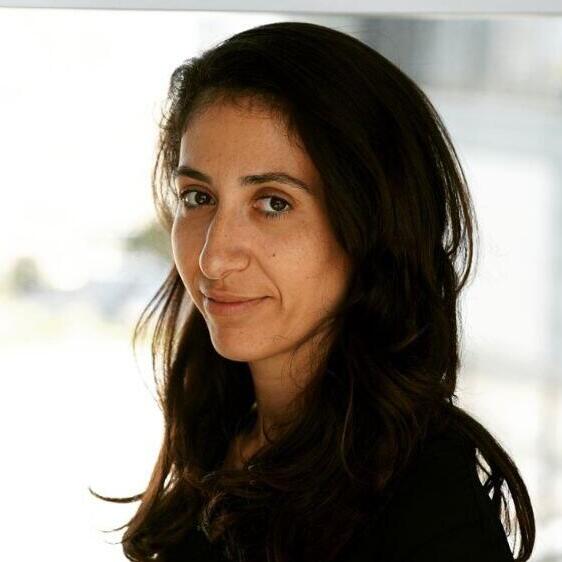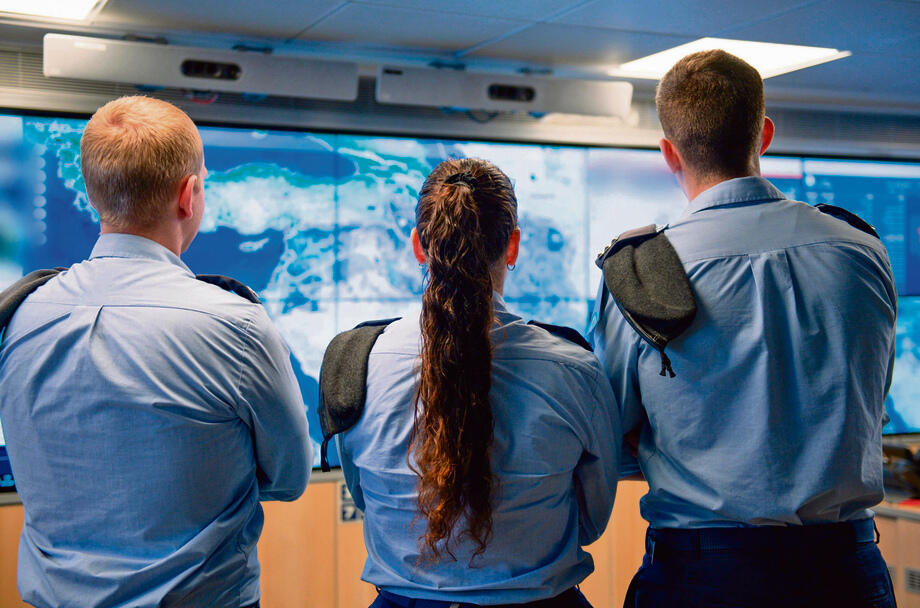Getting your Trinity Audio player ready...
The Israeli Air Force established an Iran-focused operations department in February amid escalating tensions in the region, recognizing the need for dedicated planning and operational support against Iran.
While Israel’s military has long monitored Iran through various branches, including intelligence and the Air Force, officials say recent months have underscored the need for a specialized unit as threats became more tangible.
Israeli Air Force jets preparing for strike on Iran
(Video: IDF)
“This initiative was born out of necessity,” said Capt. A., an officer in the new Iran Division who took part in the historic October 26 strike against Iran.
Iran is considered part of Israel's “third circle” of threats, characterized by its distance from Israel and its independence as a regional power, Capt. A explained. “Iran is a sovereign power capable of operating independently, which makes it unique among our adversaries,” he added.
Initially, the military’s focus at the onset of the current war was closer to home. But as fighting evolved, the northern front, including Iran and its proxies, came into focus, prompting the IDF to expand resources toward those areas.
At the start of the war, Capt. A was assigned to the Gaza theater. Similarly, Capt. N., head of the Air Force’s intelligence deep-operations division, had also been focused on Gaza. Capt. N led the intelligence efforts supporting Israel’s air raid in Iran.
Parallel to the operational department, the intelligence wing has a “Depth Division,” tasked with monitoring the second and third threat circles. Intelligence-gathering agencies provide essential insights that inform Israel’s strategic assessments and operational readiness.
“This is a massive, coordinated effort,” said Capt. N., describing her role in directing the flow of intelligence to operational commanders. “Our work supports Capt. A, who directs aircraft in real time.”
Concern for peers in the air
The night of the strike was unlike any other attack in Air Force history, yet it felt similar to training exercises. "That’s the beauty of it," says Capt. A. "When you’re prepared, nothing surprises you."
Maj. A., head of strikes in the Iran Division, recalls that night in the command center: “The only thing on your mind is carrying out the mission, hitting targets and bringing everyone back safely. Hours of planning all lead up to this moment. Those pilots out there are my brothers in arms. You hear your closest friends over the radio, and you just want them to do their job well and make it back home.”
When does the tension finally lift?
“When the operation ends, the last pilot lands and everyone’s back safely,” says Capt. N. Maj. A. adds, “You breathe half a sigh of relief when you know the strikes were successful. The second half is when everyone’s landed. In the shower, it hits you—the magnitude of what we did. You feel it wash over you.”
How do you start planning a strike on Iran?
“By identifying the what, who and where alongside the how,” explains Capt. A. “Refueling, for instance, is a basic skill for every fighter pilot. Ultimately, we can reach anywhere.”
Capt. N. adds: “It begins with setting targets and defining our objectives. Then we build a picture of what we want to achieve, bringing intelligence on targets to the initial planning process. The intel is highly focused, ensuring we’re hitting precisely the right targets, refining where we’re certain and where we’re not.”
The outcomes aren’t always immediately clear. Iran initially denied that Israel had hit anything significant, later admitting minor damage. But over time, Israel’s success became apparent, and Iranian threats intensified.
Tehran’s officials now warn of an "appropriate" response in their own time. Capt. N. notes that some immediate feedback can indicate success, but building the full picture takes time. "I believe we succeeded," she says.
With the division’s formation, some ask whether more operations like Days of Repentance will become routine.
“This is an active front, and it will remain so as long as there’s an Iranian threat,” says Maj. A. “We’ve shifted the dynamics—Nasrallah’s no longer relevant. We’re in a different event,” Capt. A. says, “and establishing an Iran Division is our statement.”
The Iran front differs from the Yemen front, though the Iran Division oversees both. Could increased Houthi activity open the Yemeni front too?
“The division was founded on the need to engage with Iran and its proxies,” says Maj. A. “The Houthi enemy is funded by Iran. We need to tackle the head of the octopus.”
Concern for hostages in Gaza
The Air Force’s Iran Division didn’t start its intelligence work from scratch; it had a solid foundation to build on. Yet, establishing a new office was essential, and setting it up was part of the process. Maj. A. describes the team that has taken shape: "We have an incredible group here. The planners, intelligence officers and reservists all share one focus—the success of the mission."
There was a lot of chatter after the first wave of strikes, even while our planes were still in the air. Are you aware of that in real time?
“Nothing distracts us when our planes are out there,” says Capt. N. “I felt completely focused on the objective.”
Are we already preparing a response to the response to the response?
“We’re always ready,” says Capt. A. He believes the war is far from over. "At least, that’s how I see it. It all begins and ends with the hostages. That’s our focus and our goal. When we reach the end of this, I think we’ll see changes across the region—and I expect this division will keep expanding.”
Get the Ynetnews app on your smartphone:









